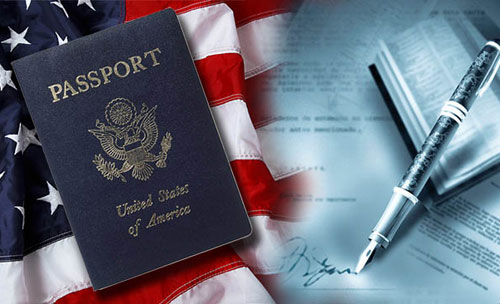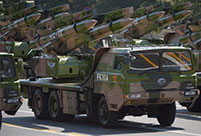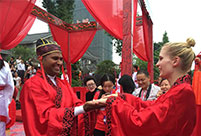

 |
Under the new bilateral visa policy which came into effect on Nov 12, China and the U.S. have extended the duration of multiple-entry, short-term tourist and business visas from one year to 10, and student visas from one year to five.
The agreement was reached during U.S. President Barack Obama's visit to Beijing for the Asia Pacific Economic Cooperation (APEC) meetings. Before the agreement, the visas were valid for 12 months only.
Statistics have shown significant growth of Chinese people applying for the U.S. visa since the new policy came into effect. In the following December and January, more than 350,000 U.S. non-immigration visas were issued to Chinese applicants, a 68.2 percent year-on-year growth. The tremendous increase of China's outbound tourism in recent years was the major drive behind the U.S.'s decision to ease the visa application process.
During the past Spring Festival, over 5 million Chinese people spent the holiday overseas, according to the China National Tourism Administration. The number of Chinese tourists visiting the U.S. increased by more than four times from 2009's 525,000 to 2.2 million in 2014, according to the U.S. National Travel and Tourism Office.
In July, a report by the China Tourism Academy showed that the U.S. has, for the first time, been voted the top destination for Chinese tourists in the long-haul category.
With its urban image, local transportation and Chinese-friendly services, the U.S. has long received positive feedback from Chinese travelers. However, being named the most satisfactory destination for the first time has a lot to do with the new policy.
Let's take a look at how the 10-year multiple-entry visa benefits Chinese travelers.
1. Once the 10-year multiple-entry visa is in hand, Chinese tourists and business travelers don't need to reapply and pay the $160 application fee annually like before. For frequent travelers, it can save up to $1,760 in 10 years.
2. Chinese tourists don't have to rush on a tight schedule to see as many places as possible, as they can go back anytime within the 10 years without applying and paying for the visa again. When the U.S. tourist visa was valid for only one year, many Chinese felt they had to visit the country once and for all in one trip, which can be exhausting. Now more Chinese people are taking their time to try new ways of travelling in the U.S., such as road trips, sea fishing and hunting.
3. For Chinese students who study in the U.S., the new visa policy offers more encouragement for their parents and friends to visit them in the U.S.. Statistics from the Institute of International Education's Open Door report show that Chinese account for about 28 percent of the foreign students studying in the U.S. in 2014, the biggest source of the country's foreign students. Their family and friends now won't worry about renewing their visas and therefore are more likely to visit them every year, which may account for one of the largest increases in the number of Chinese visitors to the U.S..
4. Because more Chinese people are encouraged to visit the U.S., many airlines are opening new routes and offering more flight options for Chinese people to fly to the U.S.. For example, earlier this year, Delta Air Lines launched direct flight from Shanghai to Los Angeles, China Eastern Airlines launched a direct flight from Nanjing to Los Angeles and Hainan Airlines launched a direct flight from Beijing to San Jose, California.
5. For adventurous travelers, the 10-year multiple-entry U.S. visa also offers them the chance to explore several other countries without applying for new visa. For example, Chinese passport holders with a U.S. visa can stay in Mexico and Bermuda for 180 days, the Dominican Republic and Honduras for 30 days. Chinese visitors are also allowed a visa-free stay in South Korea for 30 days and Singapore for 96 hours when travelling to the U.S..
6. As more people and money fly into the U.S. from China, the U.S. tourism industry is also striving to provide more Chinese-friendly service. Many hotels, restaurants and shops in the U.S. are reported to be training their staff to learn Chinese. Some have also leaned to observe Chinese's habits, such as serving guests hot tea instead of ice water and preparing an electric kettle, and even a bowl of instant noodles, in the room to make them feel at home.
7. People who already have a 10-year multiple-entry U.S. visa are encouraged to make a trip to Guam, the closest U.S. territory to China. The island is conveniently located in the Pacific Ocean in Micronesia, and only about three hours' flight from China. Guam is very similar to Hawaii, except it is much smaller and not as crowded. And the best thing is, you won't have jet lag.
 Models change clothes on street in Hangzhou
Models change clothes on street in Hangzhou Charming iron ladies in China's upcoming V-Day celebrations
Charming iron ladies in China's upcoming V-Day celebrations In pics: armaments displyed in massive military parade
In pics: armaments displyed in massive military parade Charming Chinese female soldiers
Charming Chinese female soldiers Volunteers required not taller than 5ft 5in
Volunteers required not taller than 5ft 5in  Czech pole dancing master teaches in Xi'an
Czech pole dancing master teaches in Xi'an Shocked! PLA smokescreen vehicle drill
Shocked! PLA smokescreen vehicle drill Foreigners experience tranditional Chinese wedding
Foreigners experience tranditional Chinese wedding Blind date with bikini girls in Nanjing
Blind date with bikini girls in Nanjing China’s ghost riders
China’s ghost riders  US hawks full of bluster ahead of Xi’s visit
US hawks full of bluster ahead of Xi’s visit Measures prevented systemic financial risks: Premier Li
Measures prevented systemic financial risks: Premier Li France returning treasure to China sets precedent for further restitutions
France returning treasure to China sets precedent for further restitutions Day|Week